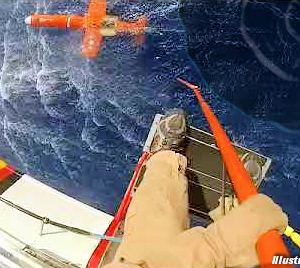Ever wondered how you could travel through time? If so, you’re not alone, as numerous scientists are also preoccupied with this idea, and they even put a few experiments together to prove their theories.
1. Speed
This is probably the most pragmatic way to move through time. Einstein’s theory of special relativity shows that whenever you travel at speeds close to the speed of light, time slows down in contrast with the outside world. It’s not just a theory, since special measurements had already been done. With the help of two atomic clocks, one onboard a jet aircraft and the other stationary on Earth, physicists have proven that the moving clock was ticking slower, due to the traveling speed of the aircraft.
It wasn’t much of a time altering since we’re far off from achieving the speed of light, but if the craft traveled at 90% of the speed of light, the time would pass approximately 2.6 time slower than it would on the Earth. Of course, if we would push the speed even further, time would slow even more.
2. Gravity
This method is also inspired by Einstein. According to his theory of general relativity, the more intense the gravity, the slower time moves. For example, if you were to travel to the center of our planet, the gravity force would increase, making time pass slower than it would on the surface.
This effect has also been measured. In 2010, physicists at the US National Institute of Standards and Technology (NIST) put two atomic clocks 33 centimeters above the other, proving there was a slight difference between their ticking rate. The one above ticked faster because the gravitational force was lower, while the one below experienced a small ticking delay.
But how can we travel to the future using this method? We only need a region with extremely strong gravity, like a black hole. Whenever you approach its event horizon, time will move slower, but this is too risky for the moment, as scientists are yet to determine what lies beyond that.
In any case, if we had the technology to reach a black hole (the closest one being 3,000 light years away,) the time altering achieved through traveling would be far greater than what we would obtain by orbiting the black hole itself.
3. Suspended animation
Now we’re talking about a more realistic way to achieve time travel , if we take into account our current technological means. Unlike the above mentioned strategies, the suspended animation will temporarily slow you perception of time by gradually lowering or stopping your body processes in order to be restarted at a later date. So instead of chasing after time travel, why not wait for it instead?
Bacterial spores are renowned for their ability to survive for millions of years in a variation of suspended animation, until the necessary conditions for life are met. At this point, they’ll just restart their metabolisms once more.
Another example comes from the animal kingdom, where bears and squirrels can slow down their metabolism while they hibernate, drastically reducing the requirements of their cells when it comes to food and oxygen. But are humans able to do the same?
4. Wormholes
Because the Universe is so vast, it allows for certain shrotcuts through spacetime so you can visit it faster. The wormhole acts as a bridge between two different points in the cosmos, providing a fast a reliable journey through billion of light years or more.
Numerous scientists, including Stephen Hawking, believe that wormholes are continuously appearing all around us, but only at a quantum scale, which is far lower than atoms. To make this viable for humans, we have to find a way to contain a wormhole and adjust its size so that we would be able to travel through it. Such a feat is doable…at least in theory.
5. Using light
Last, but not least, the idea put together by American physicist Ron Mallet points out that we could use a rotating cylinder of light to spin spacetime. At this point, anything released inside the vortex of light would theoretically be sucked-up in space and time similar to how “a bubble runs around on top of your coffee after you swirl it with a spoon.”
Mallet explains that such an experiment could grant access to time travel, but time could go either way, meaning that you could end up either in the future or the past. After publishing his theory in 2000, Mallet has been trying to raise the necessary funds to bring his concept into reality. His plan aims at dropping neutrons through a circular device of spinning lasers.
Although his assumptions were neglected by the physics community because of a small glitch found in the basic model, his experiment is likely to work if the upcoming years will bring more understanding of the laser physics. (source)










